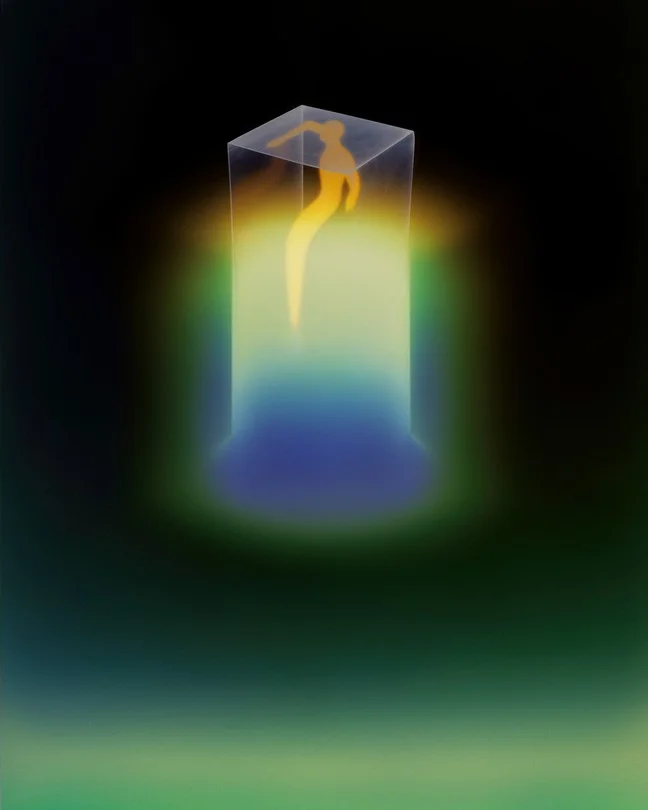
Scientists Create ‘Olo’: A Color Never Seen Before by Human Eyes
Get ready to expand your perception of color! Scientists at the University of California, Berkeley, have achieved a groundbreaking feat: the creation of a never-before-seen color called 'Olo'. This isn't just a new shade of an existing color; it's a completely novel visual experience, unlike anything that occurs naturally in the world.
How was this new color created?
The team, led by professors Austin Roorda and Ren Ng, developed a revolutionary method called 'Oz'. This technique utilizes precise beams of laser light to activate individual photoreceptor cells (cones) in the retina. Since our eyes' M and L cones respond to overlapping light, precisely targeting light allows scientists to stimulate M cones, which has never been done before.
James Carl Fong, a doctoral student at UC Berkeley, explained, "We've created a system that can track, target and stimulate photoreceptor cells with such high precision that we can now answer very basic, but also very thought-provoking questions about the nature of human color vision."

What does 'Olo' look like?
Described as an intense, blue-green hue similar to teal, viewers say Olo is far more saturated than any color they've ever encountered in nature. "It was like a profoundly saturated teal… the most saturated natural color was just pale by comparison," said Professor Roorda. Hannah Doyle, another doctoral student explained, "You know you're looking at something very blue-green... When the laser gets jittered, the normal color of the laser almost looks like yellow because the difference is so stark."
How does the 'Oz' system work?
The 'Oz' system functions like a tiny, technicolor display directly on the retina. It uses microscopic pulses of green laser light to stimulate specific types of photoreceptors (S, M, or L cones). By carefully controlling these laser pulses, researchers can create a full range of colors, or, in the case of Olo, stimulate mostly M cones.
Consider how each of our cones works to allow us to paint with light:
- S cones detect short (blue) wavelengths.
- M cones detect medium (green) wavelengths.
- L cones detect longer (red) wavelengths.
Beyond a Visual Trick: Potential Applications
The 'Oz' system goes beyond visual novelty; it holds significant potential for studying vision loss and color perception. By deactivating targeted cells in healthy participants, researchers can simulate diseases that damage cone cells with remarkable accuracy.
Hannah Doyle explains, "Many diseases that cause visual impairment involve lost cone cells. One application that I'm exploring now is to use this cone by cone activation to simulate cone loss in healthy subjects."
Furthermore, this technology holds promise for helping individuals with color blindness see a broader spectrum of colors or even granting people tetrachromatic vision, the ability to see four primary color dimensions instead of the current three.
Implications for Understanding Color

This groundbreaking work raises fundamental questions about perception and whether our experiences of color are the same. Also researchers are trying to test right away when a color blind person begins to have this ability to differentiate colors, if that’s possible, whether they can learn to name the colors. Ren Ng states that this research confronts the philosophical questions of experiencing the world: "Hey, how do I know if the yellow that I’m seeing is the same as your yellow, or if the teal that I’m seeing is the same as your teal?"
The creation of Olo has profound implications for understanding human vision and the boundaries of our perceived reality. While you won't be able to see Olo on your smartphone or TV anytime soon, its existence opens up exciting possibilities for future research and applications. Will Olo ever join the world of readily accessible colors, and what other unseen colors await discovery?
What are your thoughts on these boundaries of human perception, and would you try to see the new color if you had the chance? Let us know in the comments below.
Related issues news
What is the color olo?
What does olo look like? Those who have seen olo describe it as a teal or green-blue colour u2013 but one they had never seen before. In the article by UC Berkeley, it is described as a u201cblue-green colour of unparalleled saturationu201d.
What is the new color?
Scientists at the University of California, Berkeley, who have witnessed the new color they dubbed 'olo' described it as a deep, rich blue-greenish hue that can't be seen with the naked human eye.
Did scientists find a new color?
Scientists claim they have discovered a new colour called 'olo'. The snag is that it's only ever been witnessed by five people in the world u2013 and cannot be seen by the naked eye. Indeed, the colour, said to be a saturated shade of blue-green, cannot be seen without the help of stimulation by laser.
When was the color olo discovered?
Call it a very special turquoise. The team of electrical engineers and vision scientists has called the color u201colou201d in a paper published in Science Advances on April 18.